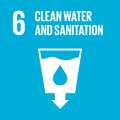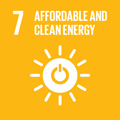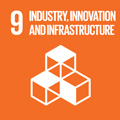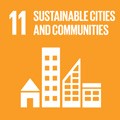- Docente: Roberto Verdone
- Credits: 3
- Language: English
- Teaching Mode: Traditional lectures
- Campus: Bologna
-
Corso:
First cycle degree programme (L) in
Electronics and Telecommunications Engineering (cod. 9065)
Also valid for Second cycle degree programme (LM) in Telecommunications Engineering (cod. 9205)
-
from Sep 20, 2024 to Dec 20, 2024
Learning outcomes
The student will be capable of identifying relevant and business-oriented applications of the IoT, the enabling wireless technologies and platforms, and predict network performance. Ten hours of team working will constitute a conceptual lab where ideas will be shared, compared and assessed under the supervision of the instructor.
Course contents
The syllabus is reported below. More info on the approach to the course can be found on www.robertoverdone.org.
Part I - Introduction (3 hours)
INT.1 IoT: Definition
INT.2 IoT: A Communication Perspective
INT.3 IoT: Application Domains
INT.4 IoT: General Framework
INT.5 The Course
Part II - Fundamental Tools (15 hours)
NFU.1 Fundamentals of Wireless Communications
NFU.2 Fundamentals of Wireless Networks
NMA.1 Fundamentals of Wireless Controlled and Random MAC
NMA.2 Aloha and S-Aloha in Compact Networks
NMA.3 CSMA in Compact Networks
NMA.4 CSMA in Sparse Networks: Hidden and Exposed Node Problem
RNA.1 Radio Network Architectures
EWT.1 Short Range Systems: 802.15.4 and Zigbee
EWT.2 Long Range Systems: LoRa and LoRaWAN
EWT.3 Long Range Systems: NB-IOT
EWT.4 5G
Part III - Making the IoT (3 hours)
APP.1 Preparation to the Lab activities
APP.2 Smart Cities
APP.3 Smart Manufacturing
Part IV - Lab (12 hours)
LHO.1 Hands-on sessions with LoRaWAN
LHO.2 Hands-on sessions with NB-IOT
LHO.3 Hands-on sessions with 5GReadings/Bibliography
Slidesets made available by the instructor.
Teaching methods
The course is based on chalk-and-talk approach for the first 18 hours. Then, interactive sessions will be proposed in the class for the next 15 hours, to consolidate the conceptual parts via numerical exercises, discussions on real world use-cases, team working sessions.
Assessment methods
The exam will consist of two parts: a written test and a discussion of the outcomes of the group work.
The written exam will consist of some numerical exercises, based on the contents of Part I and II of the course, and a closed answer questionnaire with 30 questions. Each question has four answers, one is correct and gives one point, three are wrong and give -0.33; the student can also choose not to answer, scoring zero; the exam is passed if the total score is 18 or more. It is open book, with a duration of 30 minutes. It is held online.
For the discussion the students will provide a five-minute pitch; the pitch will present one of the hands-on activities performed including the numerical achievements. A short discussion will follow in order to determine whether the student has got the main aspects of the thory behind the experience.
The two parts of the exam will be made on the same date. As an exception to the rule, at the end of the course students will be given the chance to pass the written test on a specific date set by the instructor. If passed, the student will be allowed to give the oral exam on any (only one) of the exam dates set before the next teaching semester.
The outcome of the exam is pass or fail.
Teaching tools
Material provided by the instructor: slidesets, links, templates, datasets.
Office hours
See the website of Roberto Verdone
SDGs




This teaching activity contributes to the achievement of the Sustainable Development Goals of the UN 2030 Agenda.
